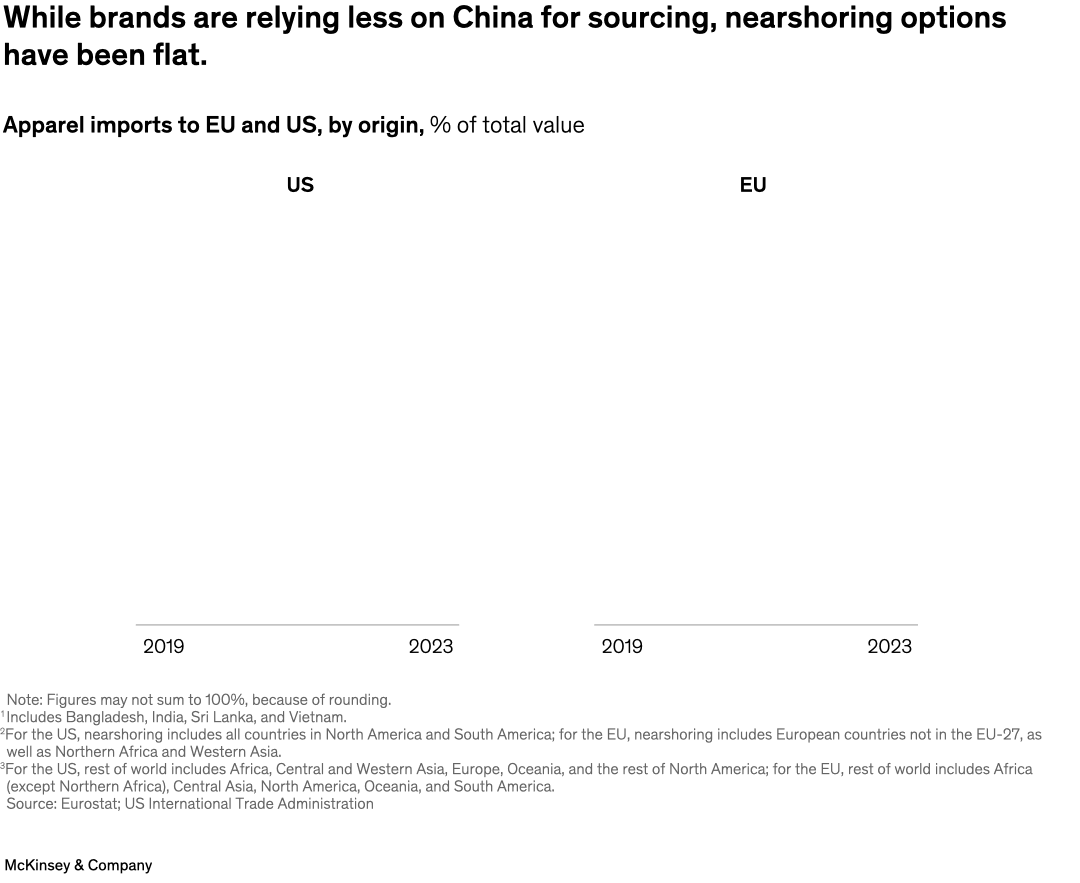Nearshoring—locating production close to consumer markets—has been a top priority for US and European apparel executives since 2016, according to McKinsey surveys. But in practice, nearshoring has remained flat, senior partner Karl-Hendrik Magnus and colleagues find. Although apparel companies are shifting sourcing away from China, production has moved primarily to other Asian countries.

Image description:
A segmented bar graph shows apparel imports to the EU and the US for 2019 and 2023. The biggest shifts are in the US, where China’s share of imported apparel has dropped from 30% to 21%, while other Asian suppliers including Bangladesh, India, Sri Lanka, and Vietnam have picked up the slack, going from 30% in 2019 to 35% in 2023. The 17% nearshored to the US (or the US, nearshoring includes all countries in North America and South America) has remained flat at 17%. In the EU, the changes are more subtle, where China’s share of imported apparel dropped from 29% to 28%, while other Asian suppliers including Bangladesh, India, Sri Lanka, and Vietnam increase slightly, from 29% in 2019 to 31% in 2023. The share nearshored to the EU (for the EU, nearshoring includes European countries not in the EU-27, as well as Northern Africa and Western Asia) shrank from 29% in 2019 to 25% in 2023.
Source: Eurostat; US International Trade Administration.
End of image description.
To read the article, see "Reimagining the apparel value chain amid volatility," May 24, 2024.